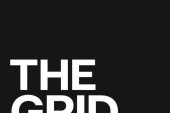
For years, Canadian media has made me cringe. Maybe it’s because I see it so often from the inside, maybe it’s because I have a complex about the relative vibrancy of media in the UK. I like to think it’s because I love my sense of its potential so much that my disappointment with its shortcomings is more bitter than it might be if I saw it as just another industry.
But thanks to this column, I’ve been thinking about media in general, and our media in particular, more closely than I have in a while (for years it was just too painful to dip in more than every couple of years to Maclean’s or This or the Walrus). And in spite of all the concern about what’s happening to the traditional media in the face of its online competition, things like the Vancouver riot make me realize we’re healthier than we’ve been in years, probably decades, maybe ever.
I also once thought that, when the crunch came and the traditional media started failing, it would be the dailies that would go first, overtaken by the second-by-second updates available from everywhere all the time, and that it would be the magazines, with their sober second looks at things, that would survive and maybe even thrive.
But once again, in the wake of the riot, I’m starting to think the opposite.
I feel more connected to this event, and that I understand it better, as a direct result of the media’s attention to it, and how that attention played out in the hours, and then days after (and before it all puddled into a canine fascination with those two people kissing). From the 15th to the 19th, our media behaved as it should, and better than it’s been able to since the nightly news was watched by everyone.
As you’d expect, the first stories were news and pictures. There were riots. They were pretty bad. Maybe it was like last year’s G20 in Toronto. Then, almost immediately, there was commentary, and with one particular exception, it came from newspaper writers.
Gary Mason, the Globe’s Vancouver guy, was one of the first off the bench, “Busting myths of Vancouver’s destructive Stanley Cup riot” while the smoke was presumably still rising from the streets and that flaming Smart Car. He saw, and we were soon to see pictures to prove it, if we hadn’t already, that it was not, as the police and mayor had initially guessed, a small group of hooligans, or even anarchists. “There are thousands of people who are culpable for what happened,” he wrote, “thousands.” (Mason came back the next day with a reference to Alan Listiak to make the case that rioting was a distinctly middle class affair; something that would be borne out with the pathetic apology of a 17-year-old numbskull water polo player surprised into tears by the fact that he could be held responsible for his obviously pointed and at least partially premeditated actions.)
The Media Co-op chimed in about the same time — still just the day after the riot itself —further disputing the fact that the riot was anything other than a mass event. David P. Ball seemed to think media commentators, including those at CTV and CBC, were also suggesting it was the work of organized anarchists, and though I couldn’t find any evidence of that, other than the quotes from other people saying such things, I’ll give him the benefit of the doubt. There’s certainly nothing in their print stuff online.
Rick Salutin wrote in the next day’s Star, quietly suggesting the riot had a lot to do with how much we invest ourselves in our symbols and emotions. It was posted on rabble.ca later, an antidote to the rest of their disappointing discussion of the issue (there’s one online media enterprise that no one’s in any danger of falling victim to).
The Georgia Straight was worse. I had to stop reading their initial take on the subject, by Adrian Mack and Miranda Nelson, when I hit a sentence that read: “and you imagine how much more fearful and angry they would be if they fully comprehended the seriousness of peak oil?”
The narrative of the riot went from “These were not fans” to “Of course they were fans, look at the damn jerseys,” to some pretty interesting discussions of human nature, a couple of references to Hobbes and the nature of human nature.
One of those Hobbesian references was by Andrew Potter, who seems to me like the product of something very particular about the way media works these days. He spends as much time writing online, it seems, as he does in print, and it’s given him an intellectual freedom — I should say its given rein to an already extant intellectual freedom — that lets him be playful and brainy, pedagogical and iconoclastic, funny and nasty in a way that someone who had to send all their stuff through the same set of fearful editors would not.
It’s something I’ve noticed elsewhere as well. That piece by Salutin, for instance, was better than anything I remember him writing in his last years at the Globe. Whether that’s because his editors were lazy — never underestimate the effect of editorial bullying, cajoling, massaging and framing when judging what follows a writer’s byline —or he’d just worn himself out, one of the side effects of Rick Salutin being set free by his employers has been a freer Rick Salutin, and when you free good writers, you get good stuff.
Chris Hume also had some great stuff about urban energy, talking about Vancouver’s “malevolent vitality,” as the flip side of what’s actually a good thing.
Friday was capped off with our own Ivor Tossell making good use of some of his own reporting on the G20 to argue that though they happened within easy memory of each other, the two riots had less in common than you might at first think.
By the weekend, the discussion was branching off into two directions, one the aforementioned canine puddle, and the other about the issue of social media and the pros and cons of people helping the police identify the rioters. The babblers at rabble talked about the “enthusiasm for citizens to oust [sic?] perpetrators on social media, essentially doing the state’s surveillance and coercion work for them.” An anarchist posting as Insurgent G on Media Co-op, in a piece that was at times more reasoned than the following quote implies, added that “heroes and vigilanties [sic] need to wake the fuck up and get their priorities strait! [sic] Fuck snitches!” and the Straight came back with an interview with Alexandra Samuel, director of the Social and Interactive Media Centre at Emily Carr University of Art and Design, who reminded us that we’re the “foundational generation” of the Internet, and doing things like offering up our Facebook pages to police may be the thin edge of a not too pleasant wedge, no matter how righteous (and even right) it may be under the circumstances (viz. numbskull polo player).
The magazines haven’t come out yet, and maybe they’ve been posting things that I haven’t noticed, and maybe, further, they’ll rise to the occasion when their issues do come out, weeks and months from now, and look deeply at the issues aroused by this latest riot. But I’m almost certain it will be an anti-climax. These journalists and writers, by now trained to think, report, opine and retort on their feet and in the full knowledge that they may be read by everyone across the country all at once, have done exactly what the best media have always striven to do: establish the facts, put them in context, and draw out their greater meanings and significance, forging links to past and future, and letting us, as readers (and the best of this was all textual journalism), see events as they are —connected to everyone and everything — rather than isolated and incomprehensible, as they so often seem to be.















